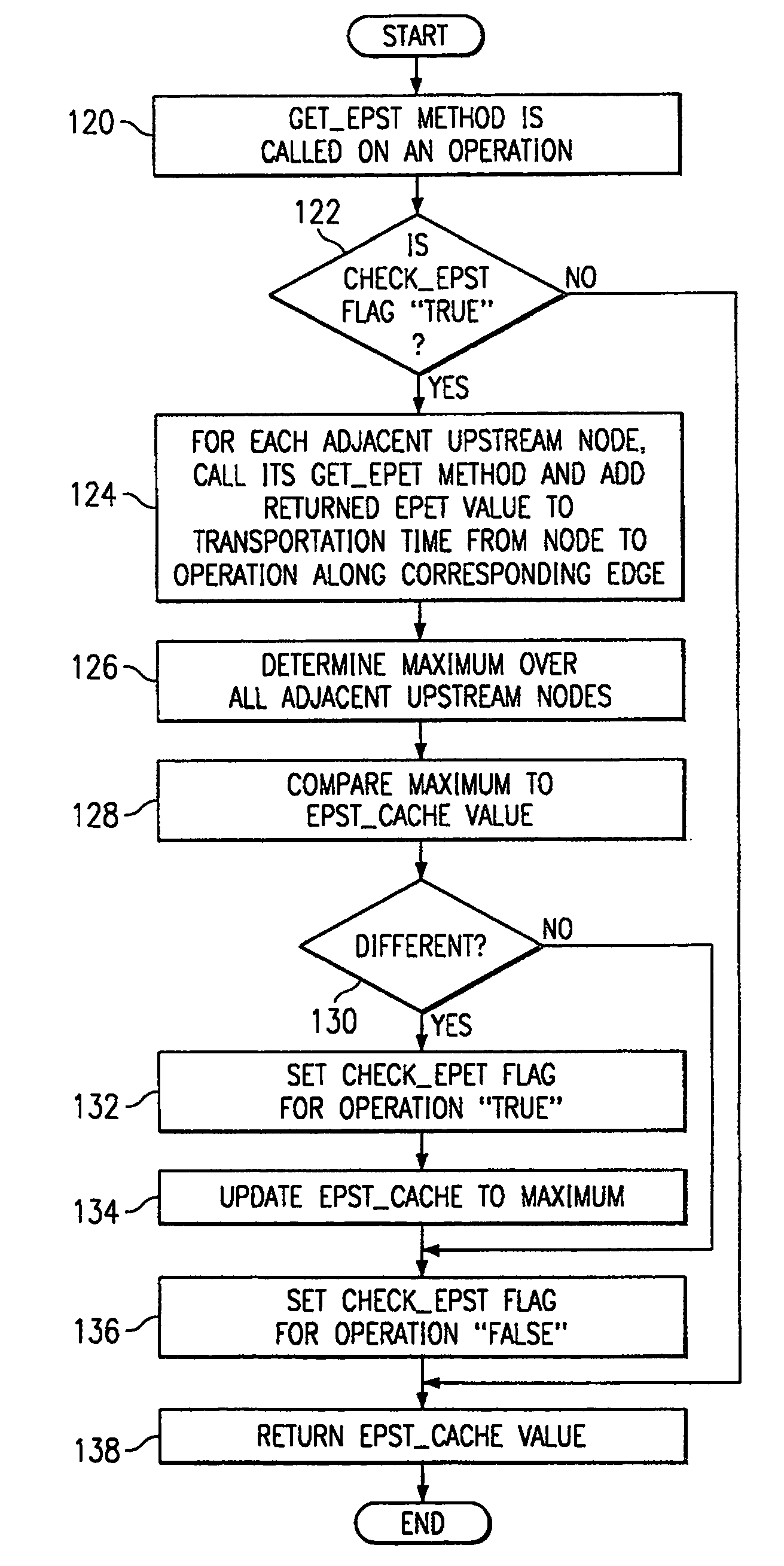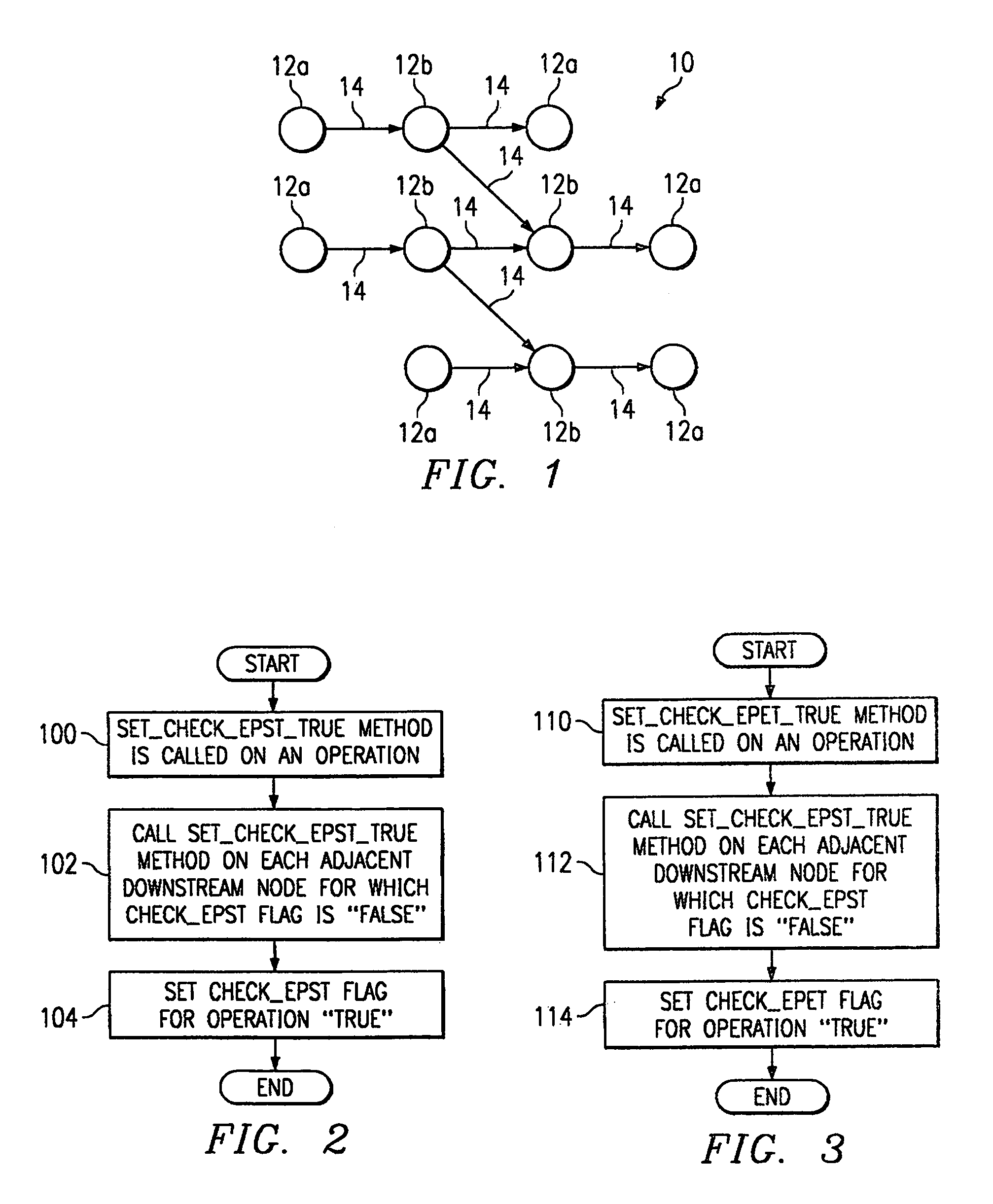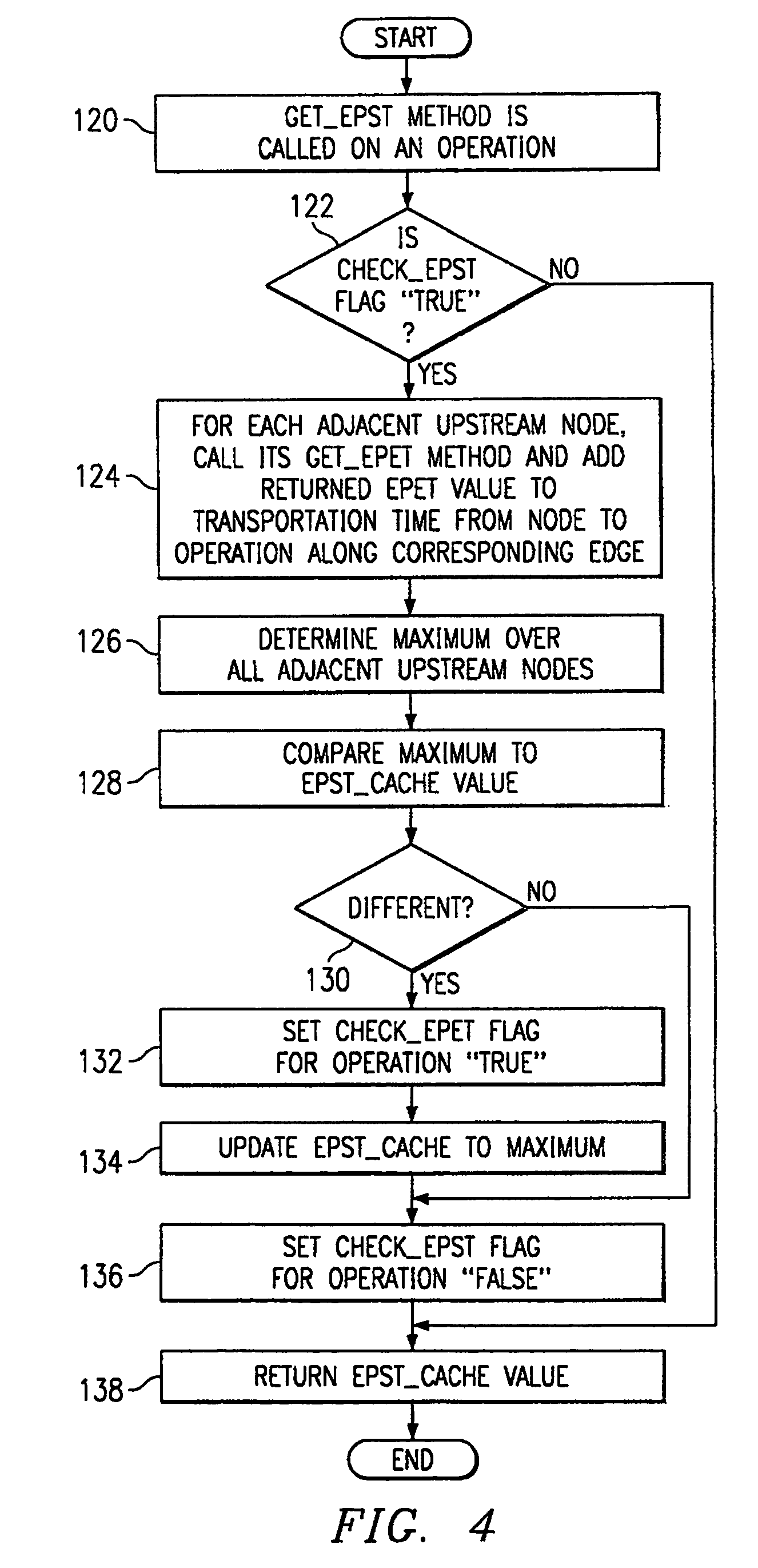Workflow modeling using an acyclic directed graph data structure
a workflow modeling and graph data technology, applied in the field of logistic planning, can solve the problems of limiting the speed with which workflow modeling tasks may be performed, previous techniques have been inadequate for many needs, and not typically employed intelligent methods to reduce the amount of computer processing required to achieve a desired level, so as to reduce the number of unnecessary recalculations of workflow-related values, reduce computational resources, and reduce the effect of unnecessary recalculations
- Summary
- Abstract
- Description
- Claims
- Application Information
AI Technical Summary
Benefits of technology
Problems solved by technology
Method used
Image
Examples
Embodiment Construction
[0018]FIG. 1 illustrates an exemplary acyclic directed graph structure 10 that models and exemplary manufacturing process. Graph structure 10 includes one or more leaf nodes 12a and one or more non-leaf nodes 12b, referred to collectively as nodes 12. In planning the use of raw materials, parts, components, assemblies, or other materials within a manufacturing process, it is typical to create a conceptual workflow model that may be represented as such an acyclic directed graph. The planned flow of materials is represented by edges 14 that connect nodes 12. Each edge 14 represents an assignment (“pegging”) of materials from a preceding node 12 to a succeeding node 12. The flow of materials over time provides a time-oriented directionality for graph structure 10. The direction relating to a later time in the manufacturing process may be referred to as the “downstream” direction, while the opposite direction relating to an earlier time in the manufacturing process may be referred to as...
PUM
 Login to View More
Login to View More Abstract
Description
Claims
Application Information
 Login to View More
Login to View More - R&D
- Intellectual Property
- Life Sciences
- Materials
- Tech Scout
- Unparalleled Data Quality
- Higher Quality Content
- 60% Fewer Hallucinations
Browse by: Latest US Patents, China's latest patents, Technical Efficacy Thesaurus, Application Domain, Technology Topic, Popular Technical Reports.
© 2025 PatSnap. All rights reserved.Legal|Privacy policy|Modern Slavery Act Transparency Statement|Sitemap|About US| Contact US: help@patsnap.com



